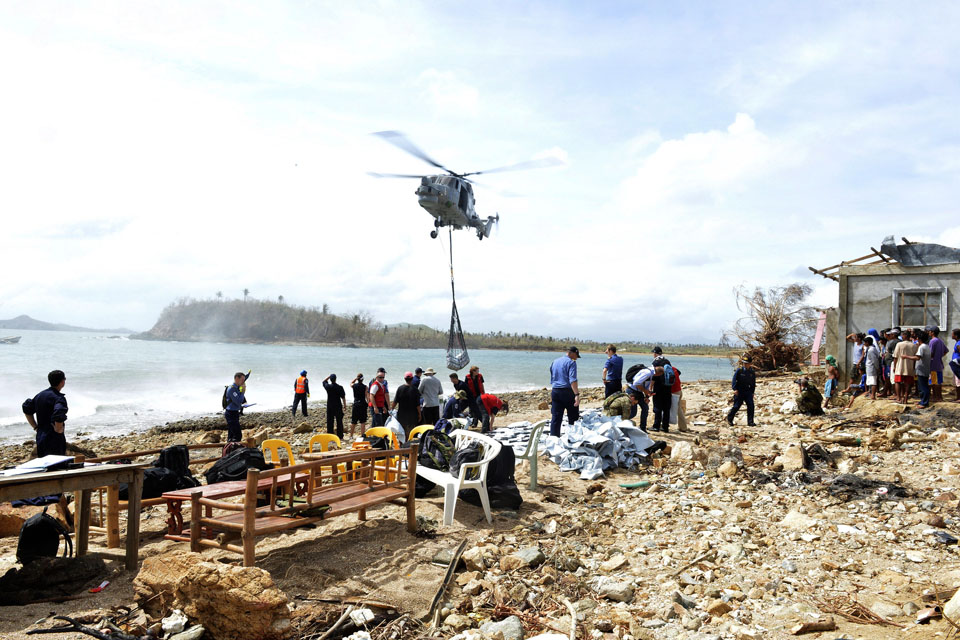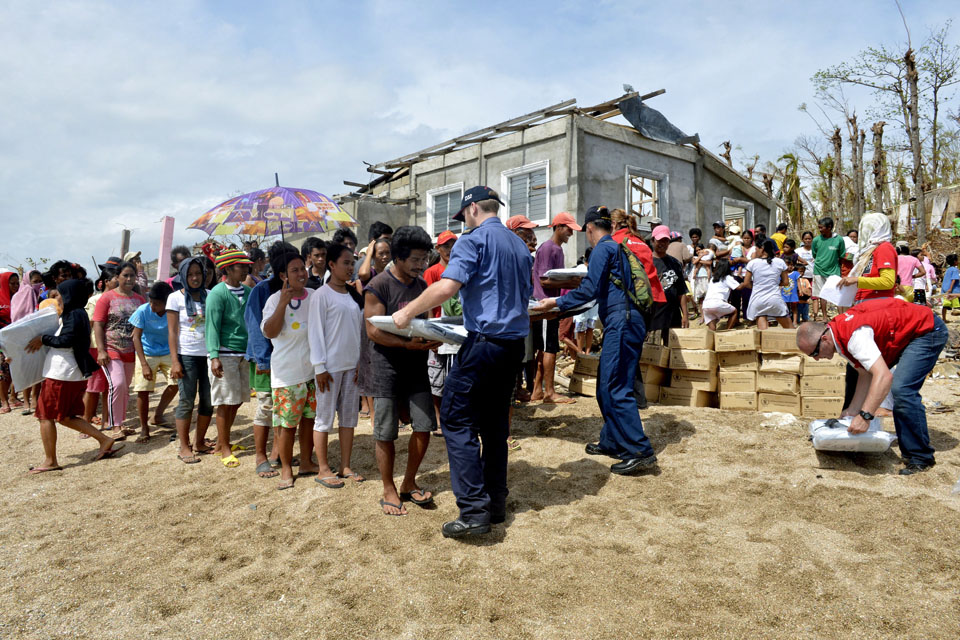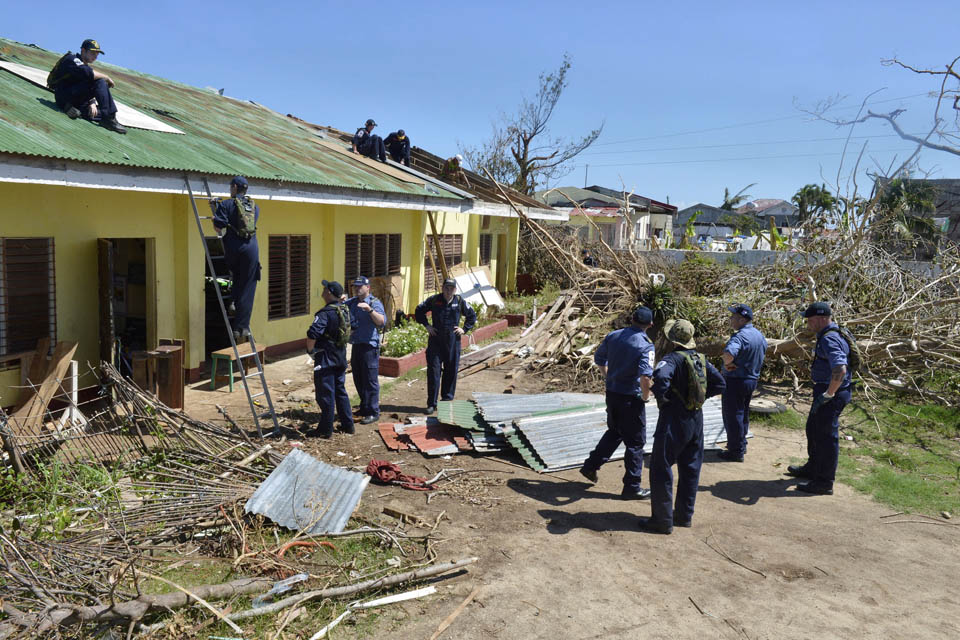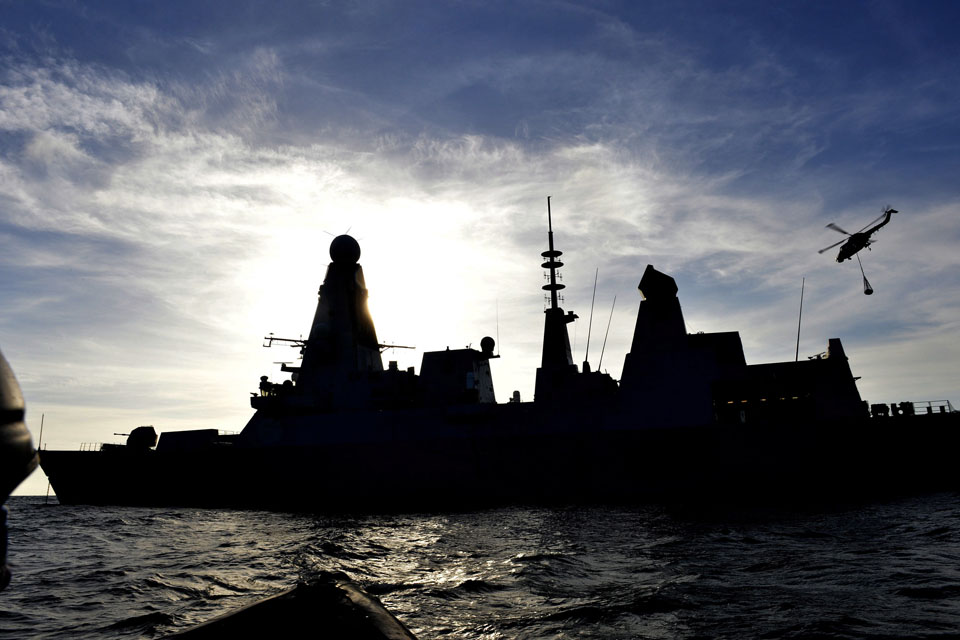UK military continues to deliver aid to Philippines
A Royal Air Force C-130 Hercules cargo aircraft has flown its first missions delivering much needed humanitarian aid around the Philippines.
![Humanitarian relief supplies are unloaded from an RAF C-130 aircraft [Picture: Crown copyright]](https://assets.publishing.service.gov.uk/media/5a621062ed915d265c510829/s300_10963784903_8448097719_b.jpg)
Humanitarian relief supplies are unloaded from an RAF C-130 aircraft
Arriving at Cebu late on 19 November 2013, the RAF crew and support team quickly prepared the aircraft, with aid flights beginning the very next day. Despite being in the Philippines for less than 24 hours, they have already delivered 40 tonnes of essential aid to 2 towns badly affected by Typhoon Haiyan.
The Hercules can use short runways and unload at locations without cargo-handling equipment, which means that it can quickly move significant quantities of aid from Cebu to small, basic airfields around the typhoon-hit area.
Working with staff from the Department for International Development at the logistics hub at Cebu International Airport, the RAF crew was able to fly 10 tonnes of high energy food and child protection kits to the residents of Roxas first thing in the morning of 20 November 2013.
Returning immediately to Cebu to reload the Hercules the crew then delivered more disaster relief aid to Ormoc, a town to the west of Tacloban.

Humanitarian relief supplies are unloaded from an RAF C-130 aircraft [Picture: Crown copyright]
Squadron Leader Calvin Bailey, the C-130 detachment commander, said:
I am extremely proud of what my team has achieved in such a short space of time. We are all determined to provide as much assistance as we can to the people living on these islands who have been so badly affected by the Typhoon.
It is clear that we are making a difference and that the abilities of the Hercules in terms of speed, reach and payload are much in demand.
Elsewhere in the Philippines, sailors from HMS Daring have arrived at the stricken island of Binuluanguan. A 36-strong team of personnel and medics from Save the Children assisted the community by delivering British-donated aid in the form of 170 shelter kits and 250 disposable fresh water carriers.

HMS Daring's Lynx helicopter delivers humanitarian relief supplies to Binuluanguan in the Philippines [Picture: Petty Officer Airman (Photographer) Paul A'Barrow, Crown copyright]
Many people on the island had been left without homes as the typhoon destroyed their flimsily-built houses, littered the shores with the fragments of their fishing vessels and contaminated their drinking water.
The sailors were able to put their disaster relief skills learnt during training into practice as they assessed the level of work needed to help the villagers get back on their feet.
With the engineering department taking the lead, they were able to construct a desalination plant for the village well, carry out repair work and maintenance on the fishing boats and later joined the rest of the team securing the donated shelter kits to local homes.

Royal Navy personnel from HMS Daring and medics from Save the Children hand out British-donated aid in Binuluanguan [Picture: Petty Officer Airman (Photographer) Paul A'Barrow, Crown copyright]
Leading Engineering Technician (Marine Engineering) Jack Coppock said:
We were all a bit nervous at the start. We had seen the pictures in the news and could see how bad it was so we were really keen to be able to help.
Now we are here and I am really glad we had our disaster relief training as it looked quite daunting when we arrived. All the people were so happy to see us and thank us. It is good to be here and making a difference.

A team of sailors from HMS Daring working to repair a school's corrugated iron roof on the Philippine island of Guintacan [Picture: Petty Officer Airman (Photographer) Paul A'Barrow, Crown copyright]
Able Seaman (Logistics) Scott Beechey only joined the Royal Navy 18 months ago and is on his first deployment. He said:
I felt really lucky when I was told I was joining HMS Daring for her round-the-world deployment, but then doing this humanitarian relief is definitely an experience I will take back with me. It feels good to be making a difference and helping people.

A Lynx helicopter from 815 Naval Air Squadron leaves HMS Daring with another load of humanitarian relief supplies [Picture: Petty Officer Airman (Photographer) Paul A'Barrow, Crown copyright]